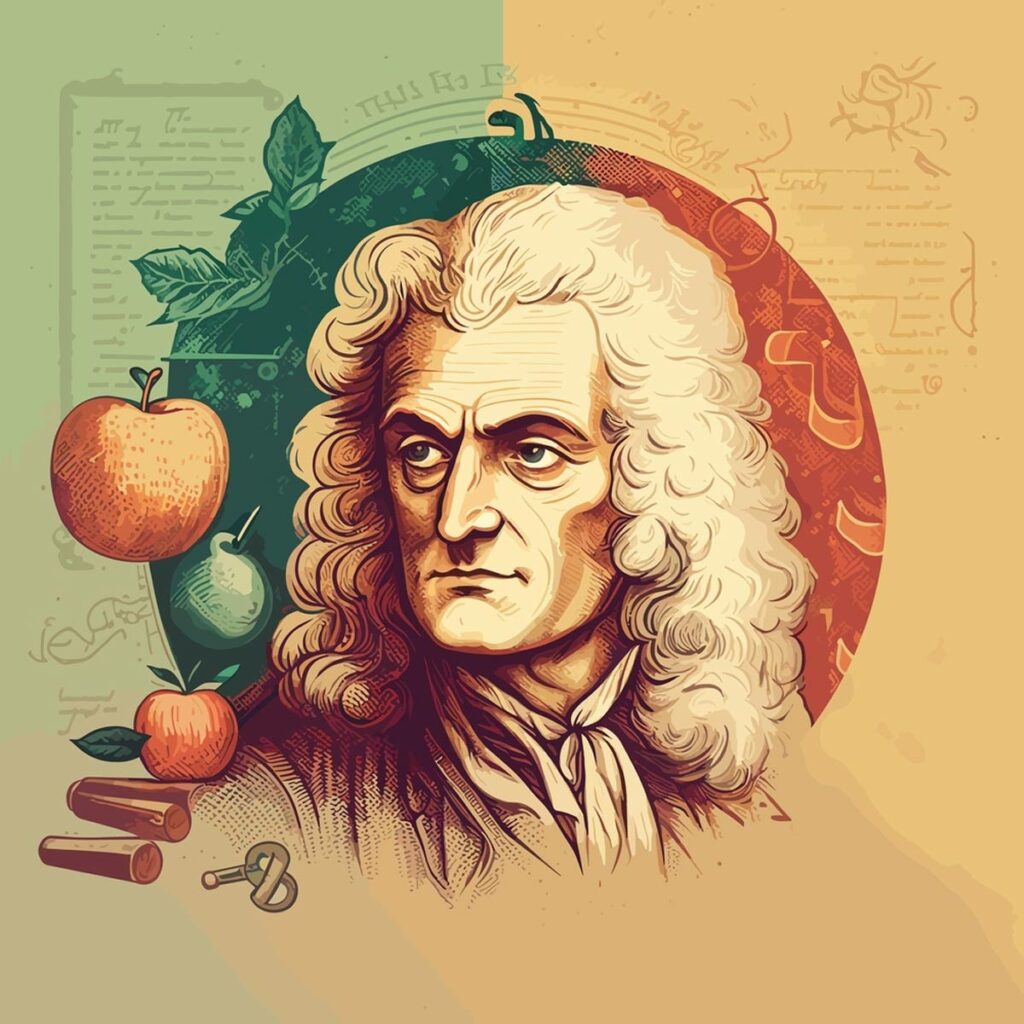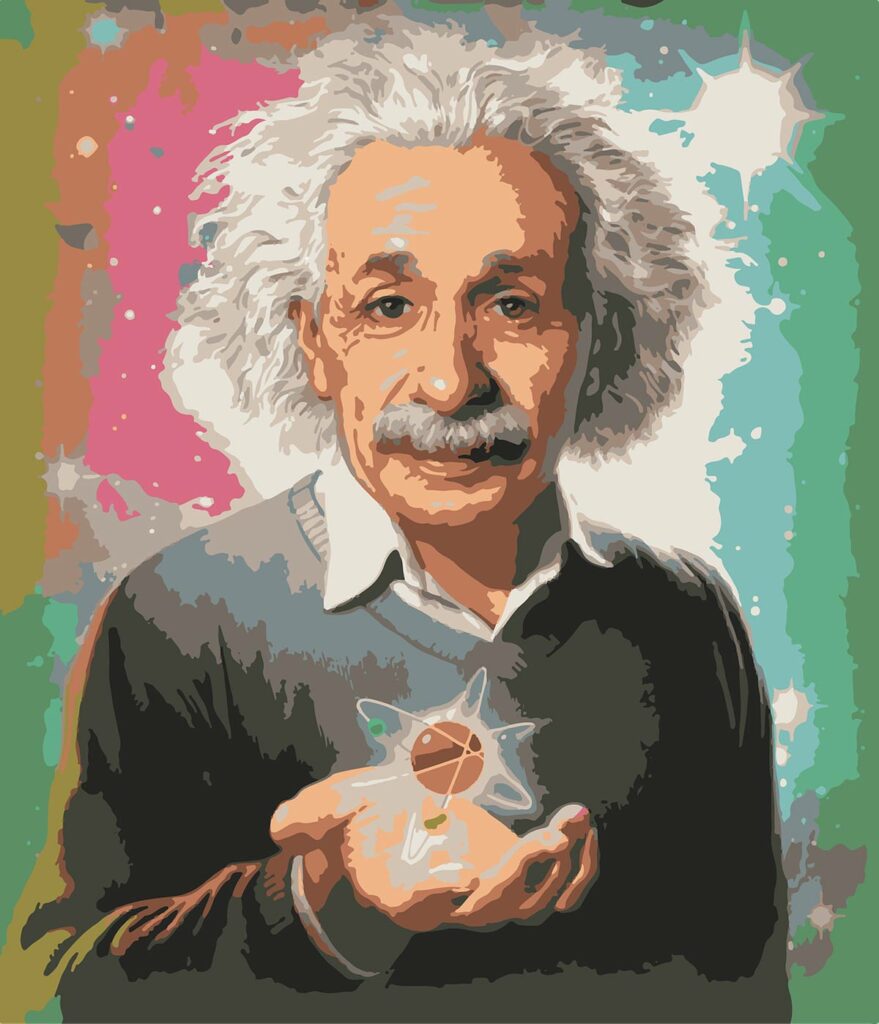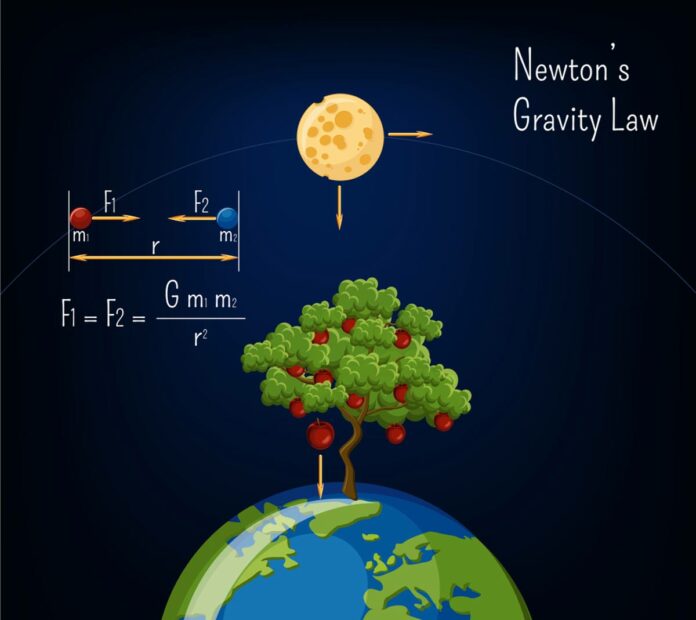For centuries, scientists and thinkers have been fascinated by gravity, the force that controls the movement of objects in the universe. In this article, we will delve into the historical background of gravity, explore the laws that govern it, and highlight the key figures who contributed to our understanding of this fundamental force.
Introduction
Gravity, an omnipresent and unyielding force that binds the fabric of existence, exerts its profound influence upon our daily experiences and orchestrates the intricate dance of the cosmos. From keeping us grounded to enabling celestial bodies to interact, gravity has a profound impact on the workings of the cosmos. But how did we come to understand this force? Let’s embark on a journey through time to uncover the fascinating story of gravity’s discovery.
Understanding Gravity
What is Gravity?
Gravity can be defined as the force that attracts objects with mass towards each other. It is an invisible and pervasive force that influences all matter in the universe. Without gravity, the planets would cease to orbit the sun, and objects would not have weight.
Who discovered gravity?
The concept of gravity has been understood for centuries, but the credit for its formal understanding and mathematical formulation is generally attributed to Sir Isaac Newton. Newton, an English physicist and mathematician, introduced the theory of universal gravitation in the late 17th century.
His groundbreaking work on gravity was published in his famous book “Philosophiæ Naturalis Principia Mathematica” (Mathematical Principles of Natural Philosophy) in 1687. Newton’s laws of motion and his law of universal gravitation provided a comprehensive explanation of how objects attract each other and how gravitational forces operate.
Historical Background
The quest to comprehend gravity dates back to ancient times. Ancient civilizations, including the Greeks, Indians, and Chinese, pondered the nature of gravity and its effects on the world around them. However, it wasn’t until the scientific revolution that gravity began to be systematically studied and understood.
Newton’s Laws of Motion
Sir Isaac Newton, an English physicist and mathematician, made significant contributions to our understanding of gravity through his laws of motion. These laws describe the relationship between an object’s motion and the forces acting upon it. Let’s take a closer look at three of Newton’s laws that are relevant to gravity.
Newton’s First Law of Motion – Law of Inertia
Newton’s first law of motion, often referred to as the law of inertia, serves as a fundamental principle in understanding the behavior of objects in motion. This timeless law elucidates that an object at rest remains stationary, and an object in motion persists in moving with an unchanging velocity, unless influenced by an external force. When applied to the captivating realm of celestial bodies, such as planets gracefully navigating their orbits, this law unveils a captivating explanation for their steadfast trajectory. In the vast expanse of space, these celestial entities obediently adhere to Newton’s first law, staying firmly on their cosmic paths unless compelled to deviate by other formidable forces. The elegant dance of celestial objects, guided by the tenets of inertia, instills a profound sense of awe and fascination as we witness the delicate balance between gravitational forces and the relentless pursuit of cosmic equilibrium.
Newton’s Second Law of Motion – Law of Acceleration
According to Newton’s second law of motion, the rate of acceleration experienced by an object is directly tied to the magnitude of the net force exerted upon it, while inversely linked to the object’s mass. In the case of gravity, this law helps explain why objects of different masses experience the same acceleration when falling near the surface of the Earth. The force of gravity acting on an object depends on its mass, but its acceleration due to gravity remains constant.
Newton’s Third Law of Motion – Law of Action and Reaction
According to Newton’s third law of motion, in response to any given action, an equal and opposing reaction inevitably ensues. In the context of gravity, this law helps us understand that when an object exerts a gravitational force on another object, the second object exerts an equal and opposite gravitational force on the first object. This law is essential in describing the interactions between celestial bodies and their gravitational influences.
The Laws of Gravity

Newton’s Law of Universal Gravitation
Newton’s Law of Universal Gravitation is a fundamental principle in physics formulated by Sir Isaac Newton in 1687. It describes the force of gravitational attraction between two objects with mass. According to Newton’s law, the force of gravity between two objects is directly proportional to the product of their masses and inversely proportional to the square of the distance between their centers.
The mathematical representation of Newton’s Law of Universal Gravitation is as follows:
F = G * (m1 * m2) / r^2Where:
- F is the gravitational force between two objects,
- G is the gravitational constant (approximately 6.67430 x 10^-11 N(m/kg)^2),
- m1 and m2 are the masses of the two objects, and
- r is the distance between the centers of the two objects.
The Law of Universal Gravitation states that every particle of matter attracts every other particle with a force that is directly proportional to the product of their masses and inversely proportional to the square of the distance between them. This means that objects with larger masses will exert a stronger gravitational force on each other, and increasing the distance between them weakens the gravitational attraction.
Newton’s Law of Universal Gravitation played a crucial role in explaining the motion of celestial bodies, such as planets and moons, and it provided a theoretical basis for understanding the dynamics of the solar system. It also served as the foundation for Albert Einstein’s theory of general relativity, which expanded our understanding of gravity and its effects on the fabric of spacetime.

Einstein’s Theory of General Relativity
Einstein’s Theory of General Relativity, formulated by Albert Einstein in 1915, is a theory of gravity that provides a new understanding of the nature of space, time, and gravity itself. It is considered one of the most significant scientific achievements in the field of physics.
General Relativity builds upon the earlier theory of Special Relativity, which Einstein introduced in 1905. While Special Relativity dealt with the physics of objects moving at constant speeds, General Relativity expanded upon this to include the effects of gravity.
The central idea of General Relativity is that gravity is not a force between masses, as described by Newtonian physics, but rather a curvature of spacetime caused by the presence of mass and energy. In other words, massive objects such as planets and stars create a “dent” or curvature in the fabric of spacetime, and other objects move along the curved paths dictated by this curvature.
Here are some key concepts and predictions of General Relativity:
- Spacetime: General Relativity considers spacetime as a four-dimensional continuum, where three dimensions represent space and the fourth dimension is time. Spacetime is not fixed but can be curved and distorted by the presence of mass and energy.
- Curvature of spacetime: Mass and energy cause spacetime to curve, similar to how a heavy ball placed on a stretched rubber sheet causes it to sag. The intricate curvature of spacetime intricately weaves the cosmic fabric, orchestrating the graceful dance of celestial objects entwined within its embrace.
- Equivalence principle: General Relativity incorporates the equivalence principle, which states that the effects of gravity are indistinguishable from the effects of acceleration. This principle implies that an observer cannot distinguish between being in a gravitational field or in an accelerating reference frame.
- Gravitational time dilation: General Relativity predicts that time runs slower in regions of stronger gravitational fields. This has been experimentally verified and has practical applications, such as the time dilation experienced by GPS satellites.
- Gravitational waves: General Relativity predicts the existence of gravitational waves, which are ripples in the fabric of spacetime caused by accelerating masses. These waves were first directly detected in 2015, confirming Einstein’s prediction.
- Gravitational lensing: General Relativity predicts that gravity can act as a lens, bending the path of light as it passes near massive objects. This effect has been observed and is used in astrophysics to study distant objects.
General Relativity has undergone extensive testing and has been confirmed by numerous experiments and observations. It has become the foundation for our current understanding of gravity and is essential for describing the behavior of massive objects, the structure of the universe, and the dynamics of black holes and the expanding universe.
Early Discoveries and Observations
Aristotle’s Theories
In ancient Greece, philosopher Aristotle put forth his theories on motion and gravity. According to Aristotle, all objects had a “natural place” in the universe, and they naturally moved towards that place based on their elemental composition. Although Aristotle’s theories were influential for centuries, they didn’t accurately explain the mechanics of gravity.
Galileo’s Experiments
In the 17th century, Italian scientist Galileo Galilei conducted groundbreaking experiments that challenged prevailing notions about gravity. Through his innovative experiments, such as dropping objects of different masses from the Leaning Tower of Pisa, Galileo demonstrated that objects of different masses fall at the same rate in a vacuum, contradicting Aristotle’s ideas. His observations laid the foundation for understanding the uniform acceleration of gravity.
Tycho Brahe’s Observations
Danish astronomer Tycho Brahe made significant contributions to our understanding of the cosmos. Through meticulous observations of the positions of celestial bodies, Brahe provided invaluable data for later scientists. One such scientist was Johannes Kepler, who used Brahe’s observations to formulate his laws of planetary motion, which furthr contributed to our understanding of gravity.
Modern Understanding of Gravity
Our understanding of gravity continues to evolve with advancements in scientific knowledge and technology. Scientists today are exploring gravity at both macroscopic and microscopic scales, studying phenomena such as black holes, gravitational waves, and the nature of dark matter. Through sophisticated experiments and observations, we are gaining deeper insights into the intricacies of gravity and its role in shaping the universe.
Conclusion
The discovery and understanding of gravity have been a remarkable journey that spans centuries. From ancient civilizations contemplating the nature of the cosmos to the groundbreaking contributions of figures like Newton and Einstein, humanity’s understanding of gravity has undergone profound transformations. Newton’s laws of motion, including the law of inertia, the law of acceleration, and the law of action and reaction, provided a solid foundation for comprehending the mechanics of gravity. Combined with Newton’s law of universal gravitation and Einstein’s theory of general relativity, we have made significant strides in unraveling the mysteries of this fundamental force.
As we continue to explore the mysteries of the universe, gravity remains a fundamental force that underpins the workings of our world.
FAQ
While gravity has been studied by numerous scientists throughout history, Sir Isaac Newton’s formulation of the law of universal gravitation in the 17th century is widely recognized as a significant milestone in our understanding of gravity.
Newton’s laws of motion are three fundamental principles that describe the relationship between an object’s motion and the forces acting upon it. They are: the law of inertia, the law of acceleration, and the law of action and reaction.
Newton’s laws of motion provide a framework for understanding the mechanics of gravity. They explain concepts such as why objects stay in their orbits unless acted upon by external forces, why objects of different masses fall at the same rate, and the equal and opposite gravitational forces between interacting objects.
The law of inertia, also known as Newton’s first law of motion, states that an object at rest will stay at rest, and an object in motion will continue moving at a constant velocity unless acted upon by an external force.
Newton’s laws of motion have practical applications in various aspects of our lives, such as transportation, sports, and engineering. They help us understand the behavior of objects in motion and guide the design of vehicles, structures, and athletic activities.
According to our current understanding, gravity is believed to be the same everywhere in the universe. However, the strength of gravity can vary depending on the masses and distances of the objects involved.
While quantum mechanics has been incredibly successful in describing the behavior of particles at the microscopic level, it has not yet been fully reconciled with the theory of gravity. Scientists continue to explore the unification of quantum mechanics and gravity, a quest known as quantum gravity.
Gravity plays a crucial role in the formation of celestial bodies, such as stars, planets, and galaxies. The force of gravity causes matter to come together and form clumps, leading to the formation of stars from collapsing gas clouds and the aggregation of planets from protoplanetary disks.
Gravity is a fundamental force that cannot be shielded or canceled out easily. While there are certain circumstances where the effects of gravity can be reduced, such as in microgravity environments or through the use of advanced technology, completely nullifying gravity’s influence remains beyond our current capabilities.
Yes, there are alternative theories of gravity that have been proposed, such as modified Newtonian dynamics (MOND), loop quantum gravity, and string theory. These theories aim to address certain phenomena or limitations not fully explained by Newton’s or Einstein’s theories and continue to be subjects of scientific investigation and debate.
According to Einstein’s theory of general relativity, gravity can affect the flow of time. In the presence of strong gravitational fields, time can slow down relative to areas with weaker gravitational fields. This phenomenon, known as time dilation, has been observed and verified through experiments and observations.
Gravity is not something that can be created or destroyed. It is a fundamental force that exists due to the presence of mass and energy. However, the effects of gravity can be altered or manipulated through various means, such as gravitational assist maneuvers in space missions or the bending of spacetime by massive objects.

